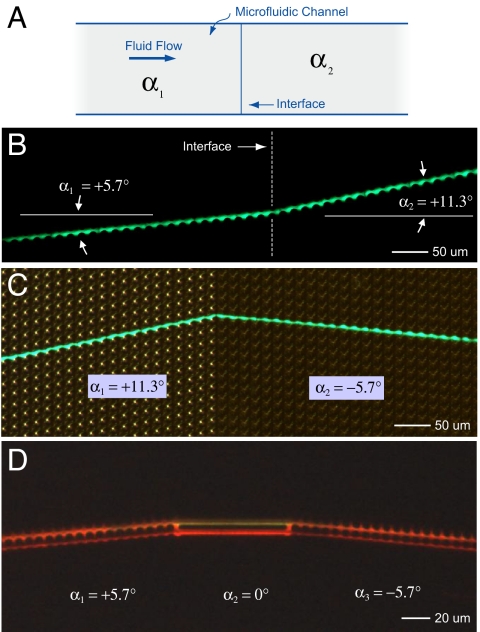Fig. 4.
Particle steering using arrays with different angles. (A) Schematic of a microfluidic channel showing the interface between two elements with different array axis angles, α1 and α2. (B) Time trace of a single, 3.7-μm diameter fluorescent bead crossing an interface between two arrays having the same post pitch (λ = 20 μm) and spacing (G = 5 μm), but with different array angles. The bead initially moves along a trajectory α1 = +5.7° before crossing into an element where the array angle is larger (α2 = 11.3°) but still positive. (C) Time trace of a 3.7-μm bead moving from an array with a positive array angle (α1 = 11.3°) into an array with a shallower and negative angle (α2 = −5.7°). Here, in addition to the fluorescent image of the moving bead, an external directional lamp was used to illuminate the post array and highlight the difference between the upstream and downstream elements. (D) The interface between elements can also made such that particles travel straight for a predetermined distance. Here, a stream of 1.3-μm fluorescent beads first travels along an array angle of +5.7° (with λ = 8 μm and G = 2.0 μm), then transits entering a short horizontal section (in this case linking channels) before finally entering a third array element with angle −5.7°.

